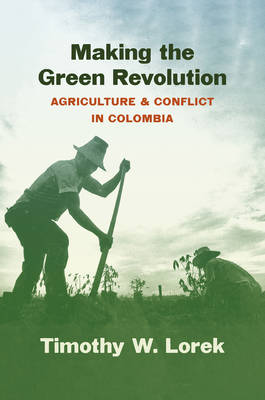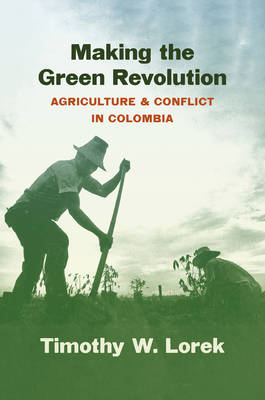
- Afhalen na 1 uur in een winkel met voorraad
- Gratis thuislevering in België vanaf € 30
- Ruim aanbod met 7 miljoen producten
- Afhalen na 1 uur in een winkel met voorraad
- Gratis thuislevering in België vanaf € 30
- Ruim aanbod met 7 miljoen producten
Zoeken
€ 57,45
+ 114 punten
Uitvoering
Omschrijving
In November 2017, the International Center for Tropical Agriculture (CIAT) celebrated its fiftieth anniversary at its headquarters outside Palmira, Colombia. As an important research center of the so-called Green Revolution in agricultural science and technologies, CIAT emphasizes its contributions to sustainability, food security, gender equity, inclusive markets, and resilient, climate-smart agriculture. Yet these terms hardly describe the Cauca Valley where CIAT is physically located, a place that has been transformed into an industrial monoculture of sugarcane where thirteen Colombian corporations oversee the vast majority of this valley's famously fertile soil. This exemplifies the paradox Timothy W. Lorek describes in Making the Green Revolution: an international research center emphasizing small-scale and sustainable agricultural systems sited conspicuously on a landscape otherwise dominated by a large-scale corporate sugarcane industry.
Utilizing archives in Colombia, Puerto Rico, and the United States, Lorek tracks the paradoxical but intertwined twentieth-century processes that produced both CIAT and sugar in the Cauca Valley. This history reveals how Colombians contributed to the rise of a global Green Revolution and how that international process in turn intersected with a complex and long-running rural conflict in Colombia.
Utilizing archives in Colombia, Puerto Rico, and the United States, Lorek tracks the paradoxical but intertwined twentieth-century processes that produced both CIAT and sugar in the Cauca Valley. This history reveals how Colombians contributed to the rise of a global Green Revolution and how that international process in turn intersected with a complex and long-running rural conflict in Colombia.
Specificaties
Betrokkenen
- Auteur(s):
- Uitgeverij:
Inhoud
- Aantal bladzijden:
- 342
- Taal:
- Engels
- Reeks:
Eigenschappen
- Productcode (EAN):
- 9781469673820
- Verschijningsdatum:
- 16/05/2023
- Uitvoering:
- Paperback
- Formaat:
- Trade paperback (VS)
- Afmetingen:
- 156 mm x 234 mm
- Gewicht:
- 526 g

Alleen bij Standaard Boekhandel
+ 114 punten op je klantenkaart van Standaard Boekhandel
Beoordelingen
We publiceren alleen reviews die voldoen aan de voorwaarden voor reviews. Bekijk onze voorwaarden voor reviews.








